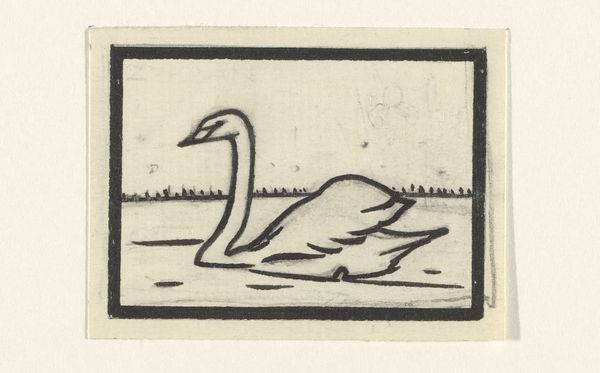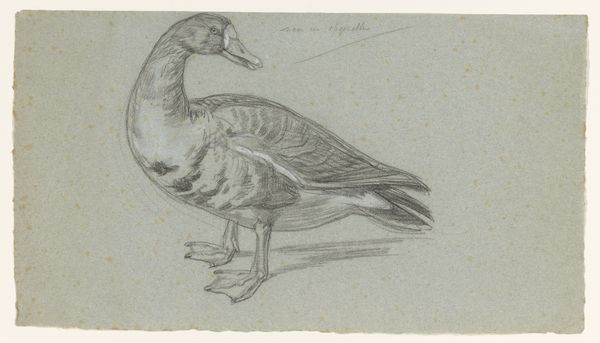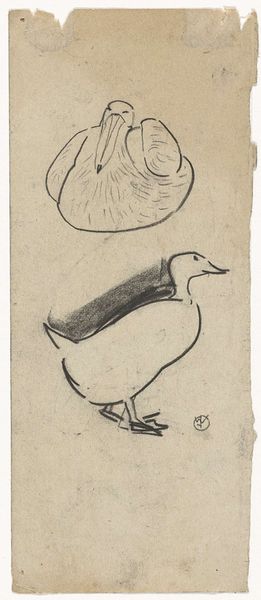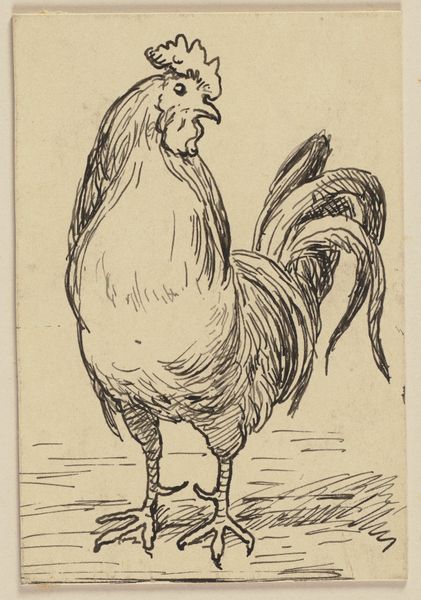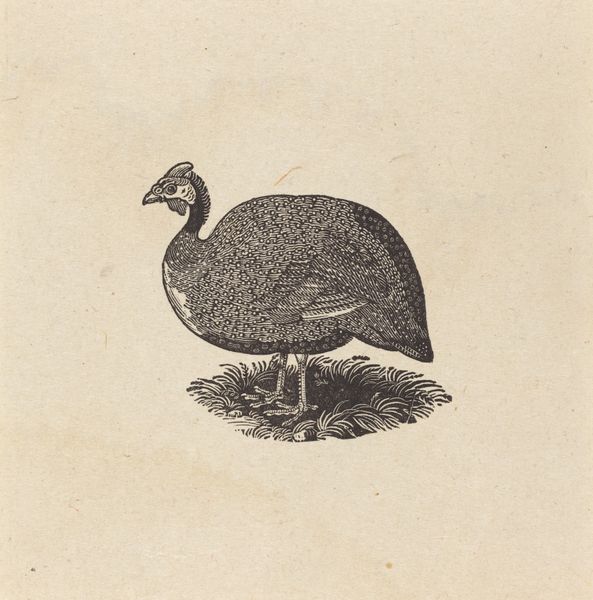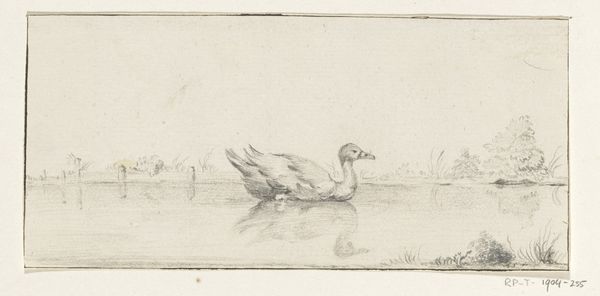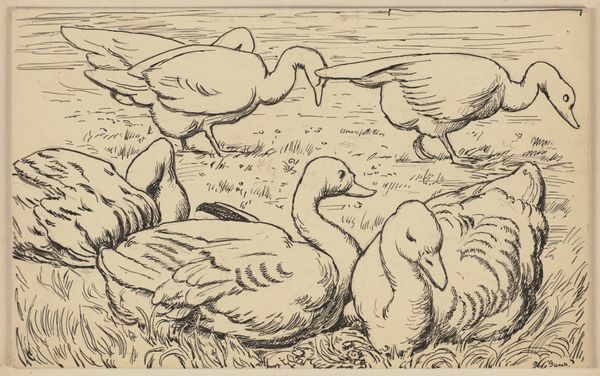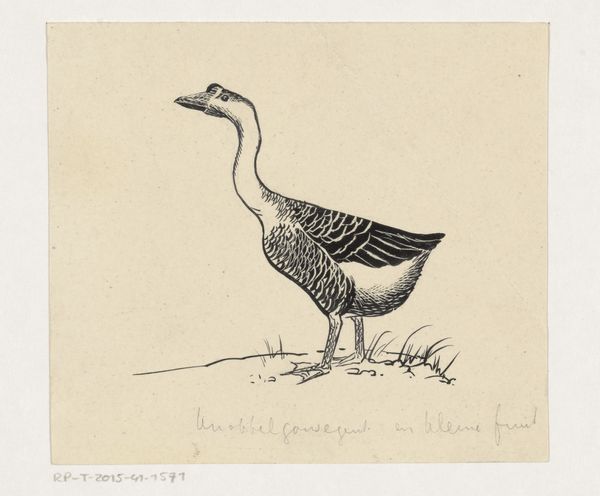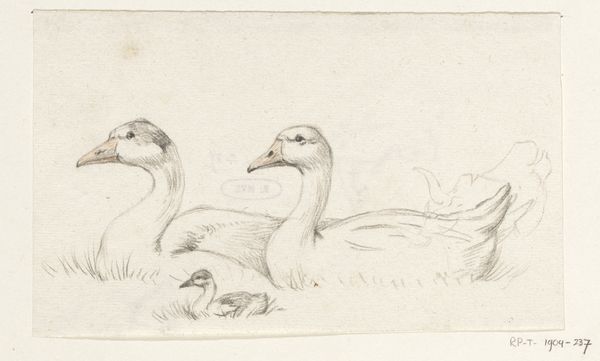
drawing, ink, indian-ink, pen
#
17_20th-century
#
drawing
#
imaginative character sketch
#
light pencil work
#
quirky sketch
#
animal
#
pen sketch
#
cartoon sketch
#
personal sketchbook
#
ink
#
german
#
ink drawing experimentation
#
indian-ink
#
pen-ink sketch
#
sketchbook drawing
#
pen
#
sketchbook art
Copyright: Public Domain
Curator: We're looking at "Drawing for the primer_ Duck" by Hans Thoma, created around 1905. It’s currently held at the Städel Museum. Editor: It's wonderfully whimsical. A simple ink drawing, but the character of that duck really shines through. Curator: Thoma was very engaged with German Romanticism. This drawing reflects that interest, and given its intended purpose, we must ask about the messages encoded within the work about that historical context for German children. How does the construction of national identity or ideas of pastoral life intersect here? Editor: For me, the interest is in how this image operates as an artistic process, how Thoma builds up form with these spare, assured lines. It looks like he’s using both pen and brush, observing and rendering in the same gesture. I wonder about the materiality of the drawing; the weight of the paper, the type of ink and its provenance. Curator: Considering its existence as an educational tool for children, the image of the duck becomes particularly intriguing when analyzed through contemporary pedagogical frameworks. The drawing becomes a site of contested meanings of how children are being shaped by this drawing. Editor: Yes, it raises questions around artistic labor, too. Was this a preliminary sketch? Or the finished product intended for mass production? And how does the means of its creation—the artist's hand, the printing press, its use by children—influence its reception and value? The material history embedded in a "simple" drawing. Curator: I think exploring it as part of an intersectional narrative is also vital. How might race, class, and gender intersect to affect its impact on its child audience? How could we create conversations that confront these historical contexts with the current audience’s perspectives and beliefs? Editor: Thinking about the present also allows one to acknowledge that our experience and understanding of a sketch such as this are intrinsically affected by modern reproductive methods and image distribution—are the lines now blurred even further between artwork and commercial object? Curator: Absolutely, exploring that tension is key. The image resonates today as much more than just a historical drawing, it reflects an entanglement of image-making, material practice, and cultural values, both past and present. Editor: Precisely. Thinking about its production, circulation, and continued resonance offers fascinating insights.
Comments
No comments
Be the first to comment and join the conversation on the ultimate creative platform.
